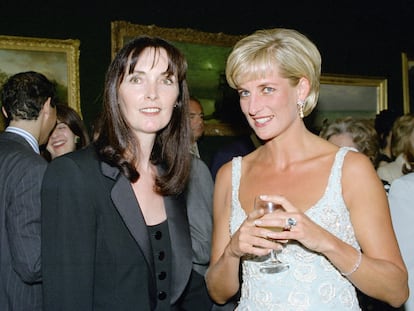British fashion celebrates 30 years of nonconformity and community
The Design Museum opens ‘Rebel: 30 Years of London Fashion,’ bringing together some of today’s great designers who participated in the program that launched their careers. The exhibit seeks to explain how the narrative of irreverent ‘British’ fashion was created and what makes it different from the rest
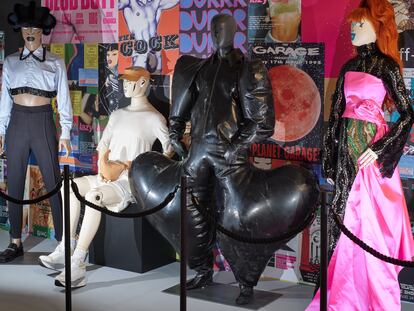
In 1993, the United Kingdom was trying to recover from one of its worst economic crises. The year before, the British pound had plummeted on Black Wednesday, and strikes and work stoppages were taking place across the nation. But they say that true creativity comes to the surface during crises, as an escape from the discontent that the British know well. Swinging London was born in the 1960s from the postwar period, while the mining crisis and widespread unemployment in the 1980s gave rise to post-punk, for example. Of course, the economic carnage of the early 1990s did not result in the birth of British fashion, but it did result in its story, a legend that associates London-made design with the avant-garde, vindication and broad-mindedness.
That year, the British Fashion Council — which organizes London Fashion Week and the British Fashion Awards, as well as logistically and financially supports local designers — created NewGen, an organization that brings together young talent, supports them financially and gives them a place to showcase their creations. Now, three decades later, the Design Museum of London has opened the exhibit Rebel: 30 Years of London Fashion, open to the public until February 11, 2024. The exhibit brings together some of the great designers who participated in that program and all the emerging designers who are currently enrolled in it. The main idea is to explain how the story of irreverent British fashion emerged and what makes it different from the fashion of other capitals. As editor Sarah Mower, one of the exhibit’s curators, explains, in 1993 “no international editor intended to come here to see fashion shows.”
But in 1993, NewGen sponsored six young designers and invited them to exhibit their creations at the Ritz Hotel in London. Alexander McQueen was one of those young creatives; at the time, he was looking for work as a designer somewhere and creating clothes “to pass the time.” He presented his second collection, Taxi Driver, named after the Martin Scorsese film and his father, a cab driver. Transported in garbage bags, that collection ended up disappearing in the club where McQueen went to party that same night, but the exhibition recreates the pieces, aptly scattered in a room inspired by the apartment where he lived with one of his collaborators, designer Simon Ungless. “We had nothing, just a desire to experiment with what little we had,” Ungless recounts in the fanzine that accompanies the show. The rest is history. “We have always supported creativity, and the fact that Lee was one of the first NewGen grantees made our support inevitable now,” says Sarah Burton, the creative director at Alexander McQueen until last February. Now owned by the Kering group, in a display of poetic justice, the company sponsored the exhibition.
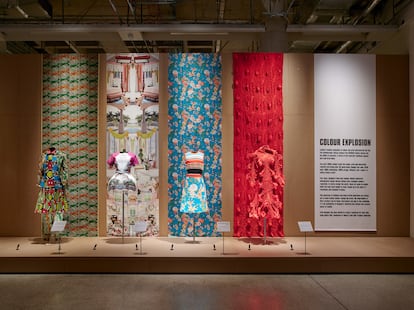
The exhibition is accompanied by a fanzine, and not a catalog, because the idea is that each creator, from Christopher Kane to JW Anderson, from Kim Jones to the young S.S. Daley, and many others, should take a look at the “do it yourself” concept (at least until others finance them). “Digital [work] was forbidden in school, I learned Photoshop alone, my mouse was my brush,” says designer Mary Katrantzou, who became world famous for her prints almost two decades ago. Indeed, the school and the club are the two focal points that the exhibition wanted to highlight to explain the story of British fashion. Nightlife — ”our moodboard”, as Simon Ungless says — is where young people have created a community around dancing and styling made to be seen on the dance floor (“it all started at a rave here,” Kim Jones says in the fanzine); and design schools. There’s special emphasis on Central Saint Martins, where, in addition to traditional techniques, designers learned (and continue to learn) sociology, history or theater; until recently, it had an extensive scholarship program (and very tough entrance exams) to promote equal opportunity.
New creative responses to new crises
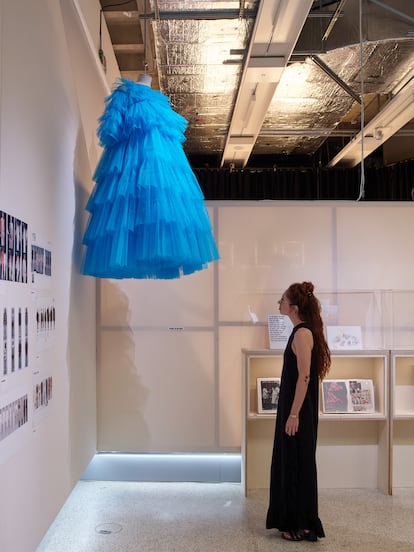
In a way, the difficult times that gave rise to the NewGen in the first place have returned. In 2019, just before the pandemic, British fashion had lost £900 million ($1,092,600,000) as a result of Brexit. The Covid-19 pandemic compounded the situation, and losses climbed to over £1 billion ($1,214,140,000). All designers opposed the UK’s exit from the European Union — Burberry sent an open letter to The Times in 2016 warning of the consequences — and Brexit means that shipments become exports with corresponding levies. Designers as promising as Paula Canovas del Vas (an LVMH prize finalist) ended up emigrating to Paris, while others, like Christopher Kane, a fixture at London fashion week for decades, is facing bankruptcy. Scholarships have also fallen by 60%, which has led to only 16% of creatives coming from non-affluent backgrounds in the last six years, according to a report by the Creative Industries Policy and Evidence Centre.
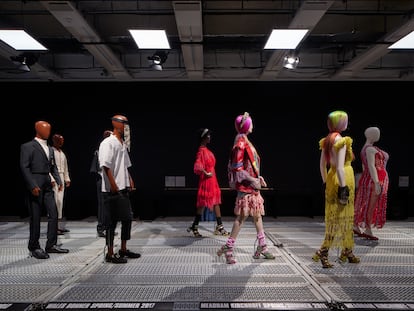
Of course, the exhibition is not the only way NewGen’s 30th anniversary is being celebrated, and during these turbulent times, British national fashion is being supported in other ways. “There are a series of initiatives that will run for 12 months that will highlight British fashion’s impact on the world,” explains Caroline Rush, chief executive of the British Fashion Council. Last September, London Fashion Week kicked off the celebrations and they will continue with the British Fashion Awards, a gala that has had a global reach for the past couple of years; its proceeds will fund the winning emerging designers. The idea of community continues to differentiate London from other capitals of fashion: following the setbacks of Brexit and the Covid-19 pandemic, the British Fashion Council has expanded its brand through sponsorships from private companies, including TikTok (where for a few years designers could sell their clothes directly), Coca-Cola and the Pandora jewelry brand, which is the current sponsor of the awards. To a large extent, those funds go to finance emerging creatives, who usually must take out loans to participate in fashion shows; the money is also used to create a support network of editors and international buyers. During the day, Selfridges gives them some of its rooms to work. In the beginning, the Ritz Hotel was the hub for hosting collections; Edition welcomes most of the guests and clients today, and its lounges and private bars are often the site of exclusive or impromptu parties.
The community is now international and appears in nightclubs every night. Many faces may be unfamiliar, but the idea remains the same. Now more than ever, British fashion needs that story to survive.
Sign up for our weekly newsletter to get more English-language news coverage from EL PAÍS USA Edition
Tu suscripción se está usando en otro dispositivo
¿Quieres añadir otro usuario a tu suscripción?
Si continúas leyendo en este dispositivo, no se podrá leer en el otro.
FlechaTu suscripción se está usando en otro dispositivo y solo puedes acceder a EL PAÍS desde un dispositivo a la vez.
Si quieres compartir tu cuenta, cambia tu suscripción a la modalidad Premium, así podrás añadir otro usuario. Cada uno accederá con su propia cuenta de email, lo que os permitirá personalizar vuestra experiencia en EL PAÍS.
¿Tienes una suscripción de empresa? Accede aquí para contratar más cuentas.
En el caso de no saber quién está usando tu cuenta, te recomendamos cambiar tu contraseña aquí.
Si decides continuar compartiendo tu cuenta, este mensaje se mostrará en tu dispositivo y en el de la otra persona que está usando tu cuenta de forma indefinida, afectando a tu experiencia de lectura. Puedes consultar aquí los términos y condiciones de la suscripción digital.
More information
Archived In
Últimas noticias
Rowan Atkinson tops Netflix at 70: ‘He’s as funny as ever’
Israeli recognition of Somaliland stirs up the Gulf
Tiger Woods turns 50: Will he continue playing on the PGA Tour or take a back seat?
The surreal journey of James Nnaji, the Barcelona youth player selected in the NBA Draft who ended up in the NCAA
Most viewed
- Oona Chaplin: ‘I told James Cameron that I was living in a treehouse and starting a permaculture project with a friend’
- Reinhard Genzel, Nobel laureate in physics: ‘One-minute videos will never give you the truth’
- Sinaloa Cartel war is taking its toll on Los Chapitos
- Why the price of coffee has skyrocketed: from Brazilian plantations to specialty coffee houses
- Chevy Chase, the beloved comedian who was a monster off camera: ‘Not everyone hated him, just the people who’ve worked with him’

